Uncovering the Origins of Celtic Mythology: From the Ancient Gods and Goddesses to Epic Tales of Heroism
Celtic mythology is a rich and complex tapestry woven with the threads of ancient gods and goddesses, mythical beings and spirits, and epic tales of heroism. It is a world that captivates the imagination, offering a glimpse into the beliefs, values, and traditions of the ancient Celts. In this article, we embark on a journey to delve deep into the origins of Celtic mythology, exploring the pantheon of deities and the enchanting realm of spirits. We will also uncover the epic tales of heroism that have been passed down through generations, from the Irish sagas of the Táin Bó Cúailnge and the Fenian Cycle to the Welsh legends of the Mabinogion and Arthurian tales. Additionally, we will explore how Christianity influenced Celtic mythology, both in terms of adaptation and the survival of mythological elements. Lastly, we will delve into the modern revival and interpretation of Celtic mythology, examining its impact on contemporary literature and popular culture. Join us on this fascinating quest as we unravel the mysteries and marvels of Celtic mythology.
Contents
- Ancient Celtic Deities
- Epic Tales of Heroism
- The Influence of Christianity
- Modern Revival and Interpretation
- Conclusion
-
Frequently Asked Questions
- Who were the ancient Celtic deities?
- What were the roles and domains of the Celtic gods and goddesses?
- Did the Celtic deities have a duality of nature?
- How were the stories and attributes of the Celtic deities passed down?
- What were some mythical beings and spirits in Celtic mythology?
- What are the Irish epics associated with Celtic mythology?
- Which Welsh epics are intertwined with Celtic mythology?
- What are the Scottish epics that reflect Celtic mythology?
- How did Christianity influence Celtic mythology?
- How is Celtic mythology still present in modern culture?
- References
-
Frequently Asked Questions
- What is Celtic mythology?
- Who were the ancient Celtic deities?
- What are some mythical beings and spirits in Celtic mythology?
- What are some famous Irish epics?
- What are some notable Welsh epics?
- Which Scottish epic is well-known in Celtic mythology?
- How did Christianity influence Celtic mythology?
- Did any mythological elements survive in Celtic culture despite Christianity?
- What is Celtic revivalism?
- How is Celtic mythology portrayed in contemporary literature and pop culture?
- References
- Read More
Ancient Celtic Deities
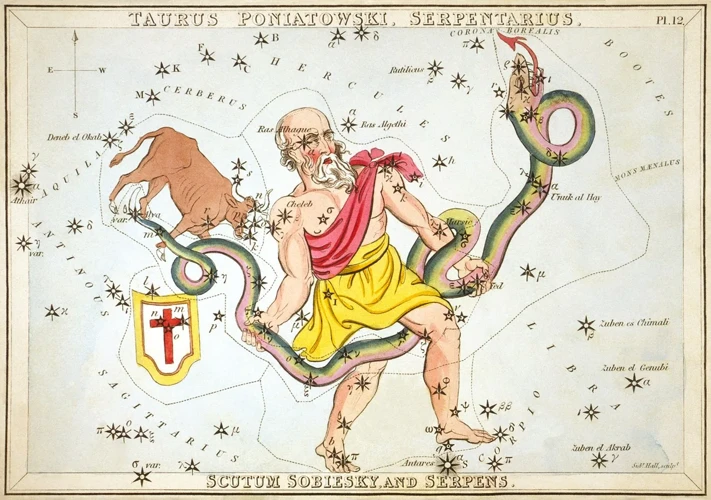
Ancient Celtic Deities
The ancient Celts revered a vast pantheon of gods and goddesses, each holding dominion over different aspects of life and nature. Among them, the most prominent were Brigid, the goddess of healing, poetry, and smithcraft; Lugh, the god of light, skill, and warfare; Danu, the mother goddess associated with rivers and fertility; and Morrigan, the fearsome queen of battle and sovereignty. These deities were not distant and aloof, but rather intertwined with the daily lives of the Celtic people, offering protection, guidance, and blessings. The Celtic gods and goddesses often possessed a duality of nature, representing both light and darkness, fertility and destruction. Their stories and attributes were passed down through centuries of oral tradition, establishing a deep connection between the Celtic people and their divine beings. Explore more about the fascinating world of Celtic mythology, where gods and goddesses reign and intertwine their powers in this guide to Ophiuchus.
The Pantheon of Gods and Goddesses
The Pantheon of Gods and Goddesses
The Celtic pantheon is a diverse collection of gods and goddesses, each embodying specific domains and attributes. Among the Celtic deities, Brigid holds a place of great reverence. She is revered as the goddess of healing, poetry, and smithcraft, representing the creative and nurturing aspects of life. Another prominent figure is Lugh, the god of light, skill, and warfare. Lugh is associated with the summer solstice and is recognized for his mastery in multiple disciplines. Danu, known as the mother goddess, is often associated with rivers and fertility, symbolizing the life-giving forces of nature. Morrigan, the fearsome queen of battle and sovereignty, holds great power and is often depicted as a crow or raven. These gods and goddesses, along with numerous others, form a vibrant tapestry of divine beings in Celtic mythology. They are not distant or remote; instead, they engage with mortals, offering guidance, protection, and blessings in various aspects of life. Understanding the pantheon of gods and goddesses is essential for comprehending the depth and richness of Celtic mythology. To explore more about the pantheon of gods, including their influence on life choices and traits, check out this guide to career choices based on Ophiuchus zodiac traits.
Mythical Beings and Spirits
Mythical Beings and Spirits
In addition to the gods and goddesses, Celtic mythology is also replete with a myriad of mythical beings and spirits that played significant roles in the tales and beliefs of the ancient Celts. These ethereal entities inhabited the various realms of Celtic cosmology, bringing both wonder and trepidation. One such being is the leprechaun, a mischievous creature known for its love of gold and its ability to grant wishes. The banshee, on the other hand, is a wailing spirit associated with death and is said to foretell the demise of a family member. The selkie, a creature from Celtic folklore, is a seal-like being capable of transforming into a human with the removal of its magical skin. Other notable mythical beings include the púca, a shape-shifting trickster, and the kelpie, a water horse that lured unsuspecting travelers to their doom. These enchanting and sometimes terrifying creatures were deeply ingrained in the Celtic imagination and added a magical and mysterious element to their mythological beliefs. Discover more about the compatibility of Ophiuchus with Sagittarius in matters of the heart and explore the depths of their astrological connection here.
Epic Tales of Heroism
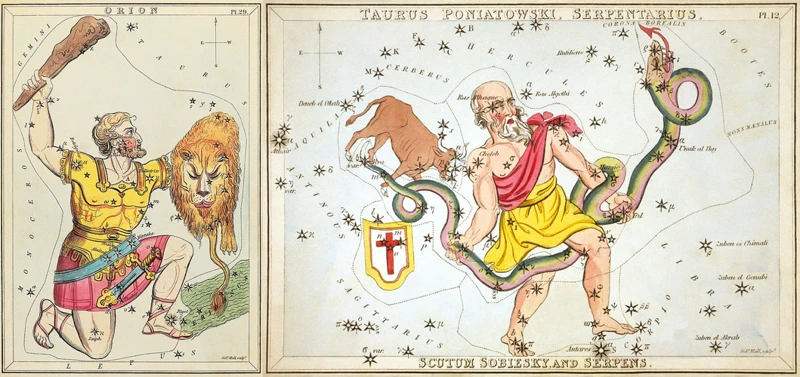
Epic Tales of Heroism
The epic tales of heroism within Celtic mythology showcase the valor, bravery, and extraordinary feats of legendary figures. In Ireland, two renowned sagas take center stage: “The Táin Bó Cúailnge” and “The Fenian Cycle.” “The Táin Bó Cúailnge” tells the story of the Ulster hero Cú Chulainn and his relentless defense of his homeland against Queen Medb of Connacht. Meanwhile, the Fenian Cycle revolves around the warrior band led by the charismatic Fionn mac Cumhaill, brimming with stories of daring quests, battles, and encounters with magical creatures. In Wales, the Mabinogion is a collection of tales weaving together the heroic exploits of characters such as King Arthur and the enchanting Lady Rhiannon. Lastly, Scottish mythology embraces the legends of Fionn mac Cumhaill (also known as Fingal) and the Fingal Cycle, which chronicles his adventures and the fierce battles fought against giants and rival warriors. These epic tales of heroism are steeped in bravery, honor, and a touch of magic, embodying the essence of Celtic mythology.
Irish Epics: The Táin Bó Cúailnge and The Fenian Cycle
Irish Epics: The Táin Bó Cúailnge and The Fenian Cycle
Two of the most well-known Irish epics are the Táin Bó Cúailnge and The Fenian Cycle. The Táin Bó Cúailnge, also known as The Cattle Raid of Cooley, is a tale of heroic feats, honor, and warfare. At the center of the epic is the legendary hero Cú Chulainn, whose superhuman strength and bravery become the stuff of legend. The story revolves around the conflict between Queen Medb of Connacht and the Ulster kingdom over ownership of a famous brown bull. Cú Chulainn single-handedly defends Ulster against the invading armies, showcasing his formidable skills as a warrior. The Táin Bó Cúailnge is replete with fantastical elements, such as shape-shifting and sorcery, adding an air of magic and mysticism to the narrative.
The Fenian Cycle, on the other hand, is a collection of stories that revolve around the adventures of Fionn mac Cumhaill and the warrior band known as the Fianna. These tales, passed down through generations, are filled with quests, battles, and encounters with otherworldly beings. Fionn mac Cumhaill is portrayed as a noble leader and a wise figure, revered for his exceptional hunting and fighting skills. His most famous adversary is Diarmuid Ua Duibhne, whose tragic love affair with Fionn’s wife, Gráinne, adds a touch of romance and heartache to the epic.
Both the Táin Bó Cúailnge and The Fenian Cycle are cherished examples of Irish folklore and mythology. They not only entertain with their thrilling adventures but also offer insight into the values, ideals, and societal structures of the ancient Irish people. These epics continue to inspire contemporary literature and cultural expressions, symbolizing the resilience and spirit of the Irish heritage. Explore the world of Celtic mythology and immerse yourself in the captivating tales of heroism and honor present in the Irish epics of the Táin Bó Cúailnge and The Fenian Cycle.
Welsh Epics: The Mabinogion and Arthurian Legends
Welsh Epics: The Mabinogion and Arthurian Legends
The Welsh epics hold a prominent place in the realm of Celtic mythology, with two notable examples being The Mabinogion and the Arthurian Legends. The Mabinogion, a collection of interconnected tales, showcases the rich storytelling tradition of Wales. These stories transport readers to a world of magical enchantment, with characters like Pwyll, Branwen, Math, and Gwydion weaving intricate tales of adventure, love, and tragedy. The Mabinogion not only offers a glimpse into the ancient Welsh culture but also explores universal themes of heroism, loyalty, and the consequences of actions.
In addition to The Mabinogion, the Arthurian Legends also have deep roots in Welsh mythology. While King Arthur and his Knights of the Round Table have become famous figures in medieval literature, the origins of Arthurian legends can be traced back to ancient Celtic mythology. Welsh folklore portrays Arthur as a heroic figure, defending the land against invaders and embarking on quests of honor and chivalry. The stories of Arthur and his companions, such as Merlin the enchanter and Guinevere the queen, captivate readers with tales of bravery and the pursuit of ideals. These legends have not only inspired countless literary works but have also become an important part of British folklore and national identity.
Exploring the Welsh epics of The Mabinogion and Arthurian Legends allows us to delve into the intricate tapestry of Celtic mythology, where legends intertwine with historical figures and ancient beliefs. These tales showcase the storytelling prowess of the Welsh people and highlight the values and ideals they held dear. As we immerse ourselves in the world of Welsh epics, we uncover the enduring power of these stories and their significance in shaping the cultural heritage of Wales and beyond.
Scottish Epics: Fionn mac Cumhaill and the Fingal Cycle
The Scottish epics of Fionn mac Cumhaill and the Fingal Cycle are vibrant tales that showcase the heroic exploits and legendary adventures of the renowned warrior Fionn mac Cumhaill and his band of warriors, the Fianna. These captivating stories are deeply ingrained in Scottish folklore and have been passed down through generations.
1. The Protagonist: Fionn mac Cumhaill, also known as Finn McCool, is the central figure in these epic narratives. He is depicted as a wise and valiant warrior, famous for his immense strength and supernatural abilities. Fionn is the leader of the Fianna, a group of warriors who protect and defend the kingdom of Scotland.
2. The Fianna: The Fianna, Fionn’s loyal and courageous band of warriors, play a significant role in the Fingal Cycle. Composed of skilled hunters and fighters, they undertake various quests and engage in fierce battles against mythical creatures and enemies of the realm.
3. The Feats and Adventures: The Scottish epics narrate a series of remarkable feats accomplished by Fionn and the Fianna. These include battles against ferocious giants, encounters with magical beings such as selkies and kelpies, and quests to obtain elusive treasures and legendary weapons.
4. Themes of Honor and Fate: The Fionn mac Cumhaill tales are imbued with themes of honor, loyalty, and the inexorable power of fate. The characters grapple with moral dilemmas, navigate complex relationships, and face the consequences of their choices in a world deeply influenced by the forces of destiny.
5. Influence and Legacy: The Fingal Cycle, with its tales of heroism and enchantment, has had a lasting impact on Scottish literature and cultural identity. It has inspired numerous works of art, poetry, and music, showcasing Scotland’s rich storytelling tradition through the ages.
The Scottish epics of Fionn mac Cumhaill and the Fingal Cycle continue to captivate audiences with their larger-than-life characters, thrilling adventures, and timeless themes. These tales offer a remarkable glimpse into the mythological landscape of Scotland, where ancient heroes and mythical creatures roam, and the spirit of adventure never fades.
The Influence of Christianity
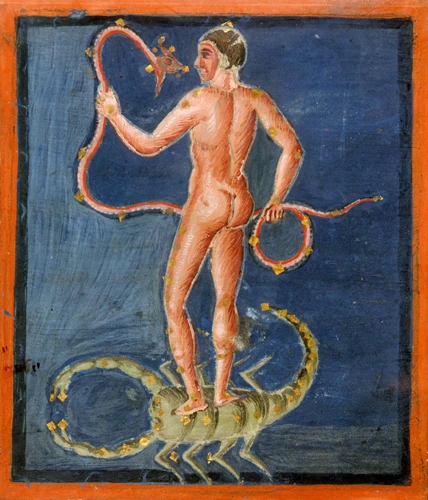
The Influence of Christianity
With the arrival of Christianity in Celtic lands, a significant transformation occurred within the realm of mythology. The ancient Celtic deities were assimilated into the new religious framework, leading to the proliferation of adaptation and syncretism. Pagan rituals and beliefs were gradually woven into Christian practices, allowing for the survival of mythological elements. This merging of old and new allowed the Celtic people to find common ground between their ancestral traditions and the teachings of Christianity. As a result, figures like Brigid, once revered as a pagan goddess of healing and poetry, became associated with Saint Brigid, a revered Christian saint known for her compassion and dedication to others. This syncretic approach provided a bridge between the old ways and the new faith, allowing the rich tapestry of Celtic mythology to continue to exist in the hearts and minds of the people. Explore more about the survival of mythological elements through the influence of Christianity by delving deeper into Ophiuchus career choices and zodiac traits.
Adaptation and Syncretism
Adaptation and Syncretism
Adaptation and syncretism played a significant role in the evolution of Celtic mythology as Christianity began to spread throughout the Celtic lands. The arrival of Christianity brought forth a merging of beliefs and practices, with elements of the Celtic pantheon being assimilated into the new religious framework. This process allowed for a smoother transition for the Celtic people, as they were able to incorporate their existing mythological traditions into the burgeoning Christian faith.
One example of adaptation and syncretism is the equating of Celtic deities with Christian saints. This practice allowed the Celtic people to continue honoring their ancient gods and goddesses in a Christian context. For instance, Brigid, the Celtic goddess of healing and fertility, became Saint Brigid of Kildare, who was revered as a powerful patroness and protector. Similarly, the Celtic god Cernunnos, associated with nature and animals, was equated with Saint Sylvester, known for his connection to the natural world.
Alongside the assimilation of deities, Christian places of worship were often built on sacred Celtic sites. This practice demonstrated a willingness to adapt and coexist with existing spiritual spaces, rather than eradicating them entirely. Additionally, Christian holidays and festivals were frequently coincided with significant Celtic dates and customs, merging traditions and allowing for the preservation of Celtic cultural practices within the new religious framework.
The process of adaptation and syncretism was not without tension and conflict. As the influence of Christianity grew, some aspects of Celtic mythology were suppressed or vilified. Pagan rituals and practices were gradually discouraged and suppressed in an effort to promote the dominance of the Christian faith. However, traces of the ancient Celtic beliefs and traditions managed to survive in folklore, customs, and superstitions, continuing to shape the cultural fabric of the Celtic lands.
Adaptation and syncretism reflect the resilience and adaptability of the Celtic people. By merging their ancestral beliefs with the new, they were able to maintain a sense of cultural identity and connection to their mythological heritage, even in the face of religious upheaval. The blending of Christianity and Celtic mythology not only shaped the religious landscape of the Celtic lands but also left a lasting impact on the art, literature, and folklore of the region.
Survival of Mythological Elements
Survival of Mythological Elements
The arrival of Christianity in the Celtic lands brought significant changes to the religious landscape. However, despite attempts to eradicate pagan beliefs, many mythological elements managed to survive and integrate into the fabric of Christianity itself. One way this occurred was through syncretism, the blending of Celtic and Christian beliefs. Celtic deities were often reimagined as saints, their attributes and roles transformed to fit within the Christian narrative. For example, Brigid, the Celtic goddess of healing and fertility, became Saint Brigid, associated with Christian virtues such as generosity and compassion. Similarly, the festival of Samhain, the Celtic celebration of the end of harvest and the beginning of winter, was transformed into All Hallows’ Eve, Halloween. This blending of mythological elements helped ease the transition from Celtic polytheism to Christianity, allowing for the preservation of cultural traditions and beliefs. Some mythological elements continued to exist in folklore and superstitions, passed down through generations. Stories of creatures like the selkies, shape-shifting seals, and the pooka, mischievous spirits, served as reminders of the ancient myths that influenced Celtic culture. These surviving mythological elements serve as a testament to the resilience of the Celtic traditions and the enduring power of ancient beliefs in the face of religious change.
Modern Revival and Interpretation
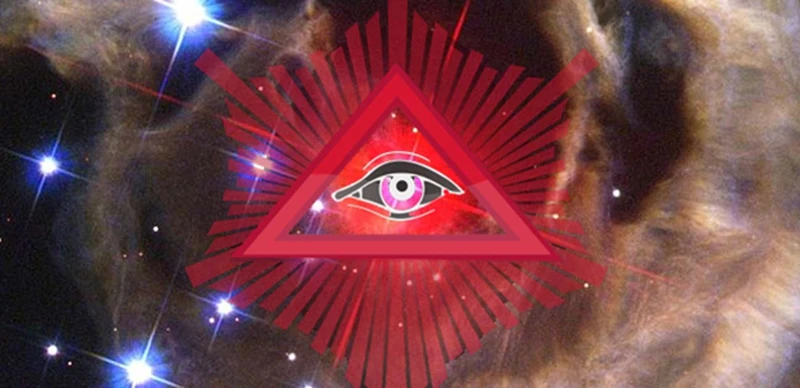
Modern Revival and Interpretation
The ancient Celtic myths and legends have experienced a remarkable revival in recent centuries, as people seek to reconnect with their roots and explore the rich cultural heritage of the Celts. This revival, known as Celtic Revivalism, encompasses various aspects like art, literature, music, and even spirituality. The revivalists, inspired by the tales of old, have embraced the symbols, folklore, and rituals of the Celtic tradition, breathing new life into it. This resurgence has also influenced contemporary literature and popular culture, with authors incorporating Celtic mythology into their works and filmmakers bringing these captivating stories to the big screen. Additionally, the revival has become intertwined with notions of national identity, empowering individuals and communities to embrace their Celtic heritage and celebrate it proudly. The mythology lives on, not only in ancient texts and archaeological remains but also in the hearts and imaginations of those who have been captivated by its magic. Explore more about the modern revival and interpretation of Celtic mythology in this guide to Ophiuchus.
Celtic Revivalism and National Identity
Celtic Revivalism and National Identity
– The Celtic Revival of the 19th and 20th centuries played a significant role in shaping the national identity of Celtic nations such as Ireland, Wales, Scotland, and Cornwall. During this period, there was a resurgence of interest in Celtic culture, language, and mythology, as well as a desire to assert distinct national identities in the face of increasing globalization and cultural assimilation. This revivalism sought to reclaim and celebrate Celtic traditions, emphasizing the unique heritage and contributions of Celtic peoples.
– Celtic languages, which had been in decline, experienced a revival during this time. Efforts were made to preserve and revitalize Gaelic in Ireland and Scotland, Welsh in Wales, and Cornish in Cornwall. These languages became symbols of cultural pride and markers of a distinct national identity.
– The Celtic Revival also saw a resurgence of interest in Celtic mythology and folklore. Scholars and writers delved into ancient manuscripts and oral traditions to uncover and reinterpret the tales of gods, heroes, and magical beings from Celtic mythology. The works of writers like William Butler Yeats, Lady Gregory, and J.M. Synge in Ireland, and Taliesin Williams and Saunders Lewis in Wales, breathed new life into these ancient stories and helped reestablish them as important cultural touchstones.
– Nationalist movements in Celtic regions, fueled by the sense of cultural revival and heritage, sought greater autonomy or even independence from the dominant political powers. These movements aimed to preserve and promote Celtic languages, traditions, and values, asserting their distinct national identities. The efforts of these movements ultimately influenced political and cultural landscapes, resulting in the recognition and protection of Celtic languages, the establishment of cultural institutions, and the celebration of national holidays and festivals.
– Today, the impact of Celtic revivalism can still be felt in countries like Ireland, Scotland, Wales, and Cornwall. National pride and the celebration of Celtic heritage remain strong, with cultural festivals, language initiatives, and the preservation of traditional arts and crafts continuing to play an important role in the national identity of these regions.
The revival of Celtic cultures and the assertion of national identities have acted as powerful forces in preserving and safeguarding the rich traditions, languages, and mythologies of these ancient Celtic lands, ensuring that their unique heritage thrives in the modern world.
Mythology in Contemporary Literature and Pop Culture
Mythology in Contemporary Literature and Pop Culture
In the realm of contemporary literature and pop culture, Celtic mythology continues to inspire and captivate audiences around the world. Authors and storytellers draw upon the rich tapestry of Celtic folklore to create new tales that resonate with modern readers. Through novels, such as Marion Zimmer Bradley’s “The Mists of Avalon” and Juliet Marillier’s “Daughter of the Forest,” readers are transported to mystical realms where ancient Celtic deities and heroes come to life. These works beautifully intertwine mythology with elements of romance, adventure, and enchantment.
Additionally, Celtic mythological elements have found their way into popular culture through various mediums. In film and television, we see the influence of Celtic mythology in works like “Brave” and “Merlin,” which explore themes of destiny, magic, and heroic quests. The mesmerizing melodies of Celtic music, with its haunting melodies and ethereal lyrics, have also made an impact, drawing inspiration from the mythological tales of ancient Celtic folklore.
Contemporary artists and designers incorporate Celtic symbolism and imagery in their creations, ranging from intricate tattoos to jewelry and clothing designs. These symbols, such as the Celtic knot, Triskelion, and the Celtic cross, not only serve as decorative elements but also carry layers of meaning and connection to the ancient myths and legends.
The enduring allure of Celtic mythology in contemporary literature and pop culture showcases the timeless appeal and relevance of these ancient tales. By weaving elements of Celtic mythology into their works, creators pay homage to the rich heritage of the Celts while captivating new generations of readers, viewers, and listeners. The continued popularity and reinterpretation of Celtic mythology in various forms of media ensure that these captivating stories will remain alive and vibrant for years to come.
Conclusion
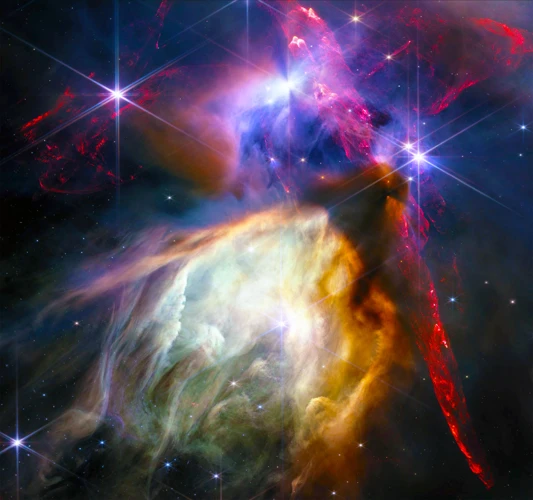
Conclusion
In conclusion, the realm of Celtic mythology is a tapestry of ancient gods and goddesses, epic tales of heroism, and the influence of Christianity. It offers a window into the beliefs and traditions of the Celtic people, showcasing their reverence for nature, their connection to the divine, and their love for storytelling. The pantheon of Celtic deities, with their dualities and complexities, reflects the multifaceted nature of the world and the human experience. The epic tales of heroism, whether in Irish, Welsh, or Scottish traditions, embody the courage, cunning, and resilience of the Celtic heroes and heroines. The arrival of Christianity brought about a transformation, causing an adaptation and syncretism of mythological elements that continued to survive despite the changing times. Today, there is a modern revival and interpretation of Celtic mythology, reflecting its enduring appeal and impact on contemporary culture. It has become a source of inspiration in literature, art, music, and film, keeping the ancient Celtic spirit alive. In conclusion, exploring Celtic mythology is a journey into a world filled with wonder, mystery, and profound wisdom.
Frequently Asked Questions
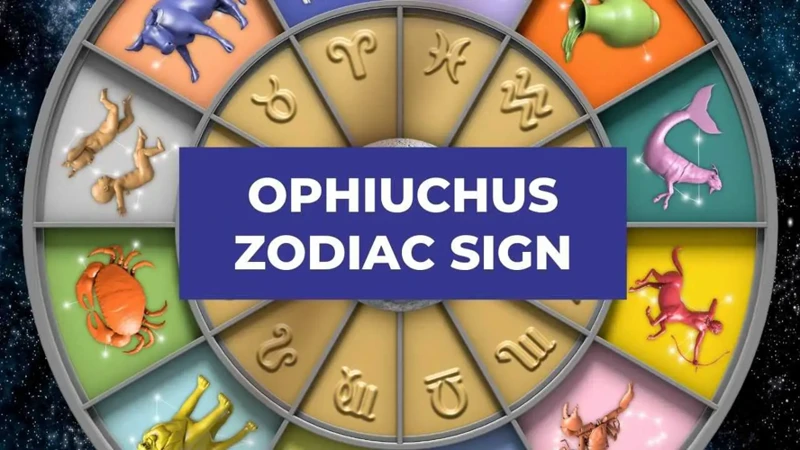
Who were the ancient Celtic deities?
The ancient Celtic deities were a diverse pantheon of gods and goddesses. Some of the well-known ones include Brigid, Lugh, Danu, and Morrigan.
What were the roles and domains of the Celtic gods and goddesses?
Celtic gods and goddesses held dominion over various aspects of life and nature. For example, Brigid was associated with healing, poetry, and smithcraft, while Lugh represented light, skill, and warfare.
Did the Celtic deities have a duality of nature?
Yes, many Celtic deities were depicted with a duality of nature. They embodied both positive and negative qualities, such as light and darkness, fertility and destruction.
How were the stories and attributes of the Celtic deities passed down?
The stories and attributes of the Celtic deities were primarily passed down through oral tradition. Bards and storytellers played a crucial role in preserving and sharing these mythological tales.
What were some mythical beings and spirits in Celtic mythology?
Celtic mythology featured a wide range of mythical beings and spirits. Examples include the fairies known as the Sidhe, the shape-changing Selkies, and the mischievous Pooka.
What are the Irish epics associated with Celtic mythology?
The Táin Bó Cúailnge and the Fenian Cycle are two famous Irish epics that draw heavily from Celtic mythology. These tales are filled with heroic deeds and supernatural encounters.
Which Welsh epics are intertwined with Celtic mythology?
The Mabinogion, a collection of Welsh stories, contains captivating narratives rooted in Celtic mythology. Additionally, Arthurian legends, with their ties to Welsh folklore, also contribute to the rich tapestry of Welsh epics.
What are the Scottish epics that reflect Celtic mythology?
Scottish mythology is associated with the Fionn mac Cumhaill stories and the Fingal Cycle. These epics showcase the adventures of legendary heroes and their encounters with mythical creatures.
How did Christianity influence Celtic mythology?
With the rise of Christianity, Celtic mythology underwent adaptation and syncretism. Some Celtic deities were assimilated into Christian saints, while others were transformed into folklore figures.
How is Celtic mythology still present in modern culture?
Celtic mythology continues to have a lasting impact on contemporary society. It has been revived through Celtic revivalism, contributes to national identity, and finds expressions in literature, art, and popular culture.
References
Frequently Asked Questions

What is Celtic mythology?
Celtic mythology refers to the collection of myths, legends, and folklore that originated from the ancient Celtic people. It encompasses the beliefs and stories of the Celtic gods and goddesses, as well as the epic tales of heroism and adventure.
Who were the ancient Celtic deities?
The ancient Celtic deities were a pantheon of gods and goddesses worshipped by the Celts. Some of the prominent deities include the Dagda, the father god and the leader of the gods, Brigid, the goddess of poetry and healing, and Morrigan, the goddess of war and fate.
What are some mythical beings and spirits in Celtic mythology?
Celtic mythology is rich with mythical beings and spirits. These include the Banshee, a female spirit associated with death and the supernatural, the Pooka, a shapeshifting creature known for its mischievous nature, and the Tuatha Dé Danann, a divine race of beings who were said to have ruled over Ireland.
What are some famous Irish epics?
Two of the most famous Irish epics are “The Táin Bó Cúailnge” and “The Fenian Cycle.” “The Táin Bó Cúailnge” tells the story of the great cattle raid of Cooley, while “The Fenian Cycle” focuses on the adventures of the legendary warrior Fionn mac Cumhaill and his band of warriors, the Fianna.
What are some notable Welsh epics?
Two notable Welsh epics are “The Mabinogion” and the Arthurian Legends. “The Mabinogion” is a collection of tales that includes stories of magic, romance, and heroism, while the Arthurian Legends revolve around King Arthur and his Knights of the Round Table.
Which Scottish epic is well-known in Celtic mythology?
Fionn mac Cumhaill and the Fingal Cycle are well-known Scottish epics. Fionn mac Cumhaill is a legendary hero who leads a band of warriors known as the Fianna, and the Fingal Cycle focuses on their adventures and battles.
How did Christianity influence Celtic mythology?
Christianity had a significant influence on Celtic mythology. With the spread of Christianity, many Celtic myths and stories were adapted and syncretized with Christian beliefs. Some Celtic deities were also assimilated into Christian saints.
Did any mythological elements survive in Celtic culture despite Christianity?
Yes, despite the influence of Christianity, some mythological elements managed to survive in Celtic culture. Many ancient festivals, rituals, and customs still carry traces of Celtic mythology. Mythological figures and creatures are also found in folklore and storytelling traditions.
What is Celtic revivalism?
Celtic revivalism refers to a cultural and artistic movement that emerged in the 19th and 20th centuries. It aimed to revive and celebrate Celtic heritage, including mythology, language, music, and art. The revivalists sought to reclaim a sense of national identity and pride.
How is Celtic mythology portrayed in contemporary literature and pop culture?
Celtic mythology continues to inspire and influence contemporary literature and pop culture. Many authors incorporate Celtic mythological themes and motifs into their works, and movies, TV shows, and video games often draw inspiration from Celtic legends and characters.






